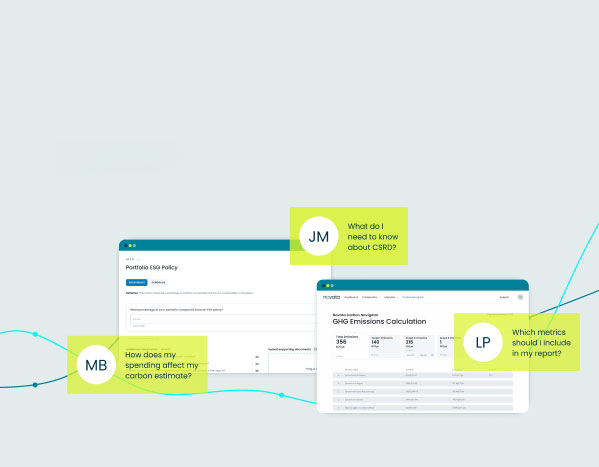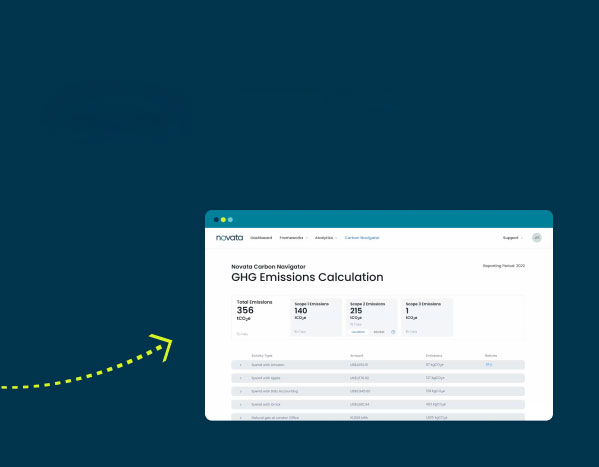While we can agree on overarching concepts common to all regions, ESG issues and risks are very region-specific. The ESG regulatory news cycles have been dominated by developments in the EU and the United States. We’d like to offer an introduction to ESG as it pertains to the regulation of Asian markets.
To unpack ESG regulation in Asian markets, Novata spoke with its ESG Advisory Council member, Ben Meng.
What are some of the ESG issues that regulators in Asia are increasingly focused on today?
We have identified five key Sustainability/ESG issues that regulators in Asia are increasingly focused on today, and also highlight some notable examples of how various jurisdictions in Asia are currently responding to these issues.
It is worth mentioning that, just as when comparing Sustainability/ESG regulation in any group of countries throughout the world, when focusing on the Asian region there is, as one would expect, a reasonably diverse array of policy and regulatory development in this area to date.
In essence, global trends in Sustainability/ESG regulation are driving local responses, which in turn reflect economic and policy priorities in different markets.
As we demonstrate here, it is highly encouraging to see the strides that are being made in Sustainability/ESG regulation across the Asian region, and we see this picking up even more pace and being applied in still further jurisdictions going forward.
Issue 1: Development of ESG fund requirements
· As with elsewhere in the world, and in particular in many European countries, Asia has been picking up the pace to develop and adopt ESG fund requirements. One of the key challenges is a lack of standardized regulations of ESG fund requirements across jurisdictions in Asia. As a result, investors should note the potential information asymmetry and data inconsistencies when measuring fund performance and considering potential ESG and climate risks.
· Jurisdictions in Asia are currently at different stages of regulatory maturity in terms of ESG funds. The regulations implemented by some jurisdictions have greater disclosure consistency and transparency – for example, Taskforce on Climate-Related Financial Disclosures (TCFD)-aligned regulations in Singapore, Hong Kong and Malaysia, or sustainability reporting and stewardship codes in Taiwan and Japan. China has also made progress in environmental reporting requirements (e.g. issuance of the Guidelines on Environmental Information Disclosure for Financial Institutions), and India has been conducting ongoing consultations on ESG regulations.
Some notable examples include:
· (Hong Kong) List of approved ESG funds – The Securities and Futures Commission of Hong Kong (SFC) maintains a publicly accessible central database of all SFC-authorized ESG funds on its dedicated ESG funds webpage. This serves as a tool against greenwashing and mislabelling of investment strategies.
· (Malaysia) Guidelines on sustainable and responsible investment (SRI) funds – Since 2017, the Securities Commission Malaysia (SC) has issued guidelines which set out requirements that funds seeking to qualify as an SRI fund should comply with.
· (Singapore) Enhanced disclosures for ESG retail funds – The Monetary Authority of Singapore introduced disclosure requirements (including fund naming, and prospectus and periodic reporting disclosures) for retail funds with an ESG focus, which will take effect on 1 January 2023.
· (Thailand) Disclosure guidelines for SRI funds – The Securities and Exchange Commission of Thailand (Thailand SEC) has issued new disclosure guidelines for SRI funds in April 2022, and these guidelines are in line with the United Nations Sustainable Development Goals (UN SDG).
Issue 2: Development and use of green taxonomies
· Sustainable financing has to date been the primary use of green taxonomies in Asia, and is based on the European framework. Most of the existing taxonomies in Asia are voluntary disclosures only, except for China, which uses taxonomies for green bonds.
· The introduction of mandated disclosure standards could potentially close these gaps. A key component of a green taxonomy would be to define the criteria for assessing what is sustainable and provide key impact and reference metrics for companies to report on. These would provide a common framework for evaluating and classifying “green” activities, alleviate any potential concerns regarding greenwashing, and potentially accelerate capital flows into sustainable “green” activities.
· Many jurisdictions across Asia have started the process of developing a green taxonomy and have been implementing product-specific green finance solutions such as green bond issuances to assess their taxonomies. We expect to see the focus shifting to the harmonization of common standards such as the ASEAN Taxonomy for Sustainable Finance to simplify the investment decision making process for investors and reduce compliance costs for companies.
· (Hong Kong) Green classification framework by Green and Sustainable Finance Cross-Agency Steering Group (Steering Group) – The Steering Group plans to establish a green classification framework, which aims to align with the publication of the Common Ground Taxonomy (CGT) report by the International Platform on Sustainable Finance and facilitates easy navigation among the CGT, China and Europe’s taxonomies.
· (Korea) K-Taxonomy – The Ministry of Environment of Korea (Ministry) established a national green taxonomy (K-Taxonomy), which refers to the classification of green economic activities and is based on the Environmental Technology and Industry Support Act. The Ministry also announced the “K-Taxonomy Guideline”, which provides principles and standards on the types of economic activities that are considered green activities.
· (Singapore) Green Finance Industry Taskforce’s (GFIT) consultation papers on Singapore taxonomy – Following on from the first consultation paper on the proposed taxonomy for Singapore-based taxonomy on 28 January 2021, GFIT published a second consultation paper on 12 May 2022 which expands on the “traffic light” approach to classification proposed in the first consultation paper and proposes criteria and thresholds for three of the eight identified focus sectors (Energy, Transport, and Real Estate). A guide has also been provided to assist financial institutions and companies to apply the taxonomy. GFIT aims to finalize the full taxonomy in 2023.
· (Malaysia) Consultation paper on SRI Taxonomy for the Malaysian capital market – The SC issued a consultation paper for its development of SRI Taxonomy in 2021. According to the SC, the SRI Taxonomy intends to accelerate the development of the SRI asset class and promote greater awareness and adoption of sustainability practices.
· (ASEAN) ASEAN Taxonomy for Sustainable Finance – In November 2021, the ASEAN Taxonomy Board introduced the ASEAN Taxonomy for Sustainable Finance, which comprises the following main elements: (1) Foundation Framework (which provides a qualitative assessment of activities) and (2) Plus Standard Framework (with metrics and thresholds to further qualify and benchmark eligible green activities and investments).
Issue 3: Increased scrutiny of supply chain due diligence and transparency from an ESG perspective
· With the increased focus by stakeholders on value creation through robust ESG strategies and the disruption of global supply chains due to the COVID-19 pandemic, companies are increasingly focusing on their corporate supply chains to manage and reduce ESG risks. Supply chain due diligence and transparency legislations are being developed across the United States, Europe and Australia. We expect regulators in Asia to follow suit as the region plays an important role in the global supply chain as a key manufacturing hub, especially since manufacturing processes within supply chains are more susceptible to environmental and social issues such as environmental pollution and forced labor.
· (Thailand) One Report – The Thailand SEC requires publicly listed companies to submit the annual “56-1 One Report”. The One Report requires companies to disclose their environmental and social internal policies and practices, which expressly includes respect for human rights within the supply chain.
· (Japan) Introduction of non-binding guidelines relating to human rights due diligence in supply chains – The Government of Japan announced on 15 February 2022 its plan to draft and issue guidelines for human rights due diligence to assist companies to detect, investigate and prevent human rights violations in their global supply chains. These guidelines are expected to be issued as early as summer 2022.
Issue 4: Adoption of TCFD recommendations on climate-related financial disclosures
· Regulators across Asia have been adopting recommendations of the TCFD through the mandating of TCFD-aligned reporting. This development will likely become an ever more pressing issue for companies and financial institutions as they attempt to identify, structure and implement the in-house processes needed to monitor the relevant matrixes and meet the reporting standards introduced.
· (Hong Kong) Guidance on Climate Disclosures – The Stock Exchange of Hong Kong (Exchange) published guidance on climate disclosures which provides practical tips and steps to assist listed issuers in meeting the TCFD-aligned climate change reporting. The Exchange also conducted an analysis of IPO applicants’ corporate governance and ESG practice disclosure in 2020/2021 and published its key findings and recommendations as guidance to enhance IPO applicants’ readiness for compliance with the Exchange’s corporate governance and ESG requirements.
· (Singapore) Financial Institutions Climate-related Disclosure Document (FCDD) – The FCDD, published by the GFIT in May 2021, highlights leading environmental disclosure practices in various industries in the finance sector (including asset managers) to assist financial institutions in preparing their disclosures and reporting framework based on their chosen market standard for sustainability reporting.
· (Japan) Implementation of new market divisions in the Tokyo Stock Exchange (TSE) with companies in ‘Prime’ market having to comply with TCFD-aligned disclosures – Since April 2022, the TSE has restructured its stock market by replacing the four market divisions with three new market segments (Prime, Standard and Growth). In line with the revision of the Japan’s Corporate Governance Code, companies listed on the new Prime market will be required to enhance their disclosures based on the TCFD recommendations.
· (Malaysia) Introduction of various TCFD disclosure guidelines – Malaysian regulators are working on various guidelines to expedite the country’s financial sector response to climate risk. Key updates include the Exposure Draft on Climate Risk Management and Scenario Analysis issued by Bank Negara Malaysia in December 2021 (which sets out proposed regulatory guidelines on the climate-related risk management by financial institutions), and the TCFD Application Guide for Malaysian Financial Institutions issued by the Joint Committee on Climate Change in June 2022 (which provides key recommendations supplemented by the relevant descriptions, guidance notes, considerations and examples that could be utilized as practical resources to facilitate the adoption of TCFD Recommendations by the Malaysian financial industry).
Issue 5: Transition Finance
· Transition finance generally refers to financial services that support companies in traditionally high-emitting sectors in their goal of aligning their businesses and operations towards environmental and social sustainability and making the transition to net zero. Transition finance has a crucial role to play in Asia, as the region is viewed as one of the key global manufacturing hubs. Such manufacturing processes are often associated with high levels of pollution and will require commercially and financially sound solutions to assist them in their journey to decarbonize. To this end, transition finance has been identified by Singapore’s Green Finance Industry Taskforce (GFIT) as another label that can complement the green, social or UN SDG labels that are currently used in the loan and capital markets.
· (Japan) Guidelines on Climate Transition Finance – The guidelines, issued by Japan’s Financial Services Agency in 2021, provide disclosures which fundraisers of transition financial instruments in debt markets are expected to meet. These guidelines incorporate four crucial elements of disclosures recommended in the International Capital Market Association Climate Transition Finance Handbook, namely: (1) climate transition strategy and governance, (2) business model environmental materiality, (3) “science-based” climate transition strategy, and (4) implementation transparency.
· (Singapore) Industry Framework Green and Sustainable Trade Finance and Working Capital Solutions (Industry Framework) – The Industry Framework issued by the GFIT in May 2021 provides a principles-based approach for banks to assess eligible green trade finance transactions (including short- and medium-/long-term loans), specific guidance on recommended industry certifications for trade finance activities to qualify as green, and reporting guidelines post disbursement of funds.
Finally, as we have been advocating recently, we believe standardized Sustainability/ESG regulations will be vital in enabling the finance industry to help address the many complex social and environmental challenges facing the world today. Given the various stages that regulators in countries both within Asia but also around the world have progressed in this respect to date, we are pleased to note several efforts being made for global coordination of many of these regulations and standards. Some notable examples of these include:
· International Platform for Sustainable Finance – The European Union led forum of eight nations, including China, comparing ESG policy, such as an analysis of the interoperability of the European and Chinese taxonomies.
· ASEAN Sustainable and Responsible Fund Standards – Development of common rules framework and ESG fund label.
· The International Organization of Securities Commission – Recommendations on ESG disclosure framework for financial products and regulation of ESG ratings providers.
· Collaboration between the International Sustainability Standards Board and the Global Sustainability Standards Board – All five of the international accounting standards bodies are now collaborating to increase harmonization of international standards on sustainability disclosures.






